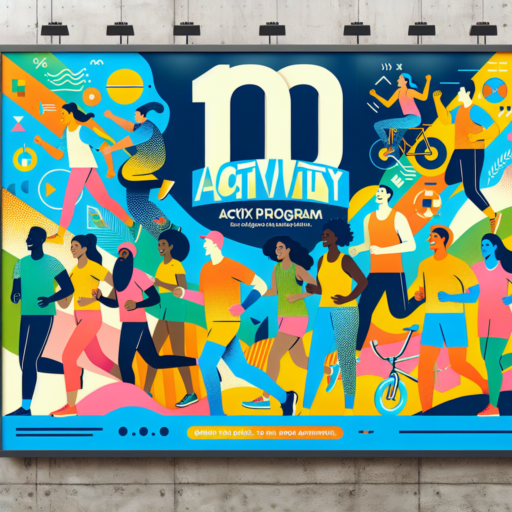Introduction to the 10k Training Plan for Beginners
Embarking on a 10k training plan can seem like a daunting task for beginners. However, with the right approach, it can be an exciting journey towards achieving a significant milestone in your running career. This introduction to the 10k training plan for beginners is designed to set the foundation for your success. Whether your goal is to finish your first race or to set a personal best, understanding the basics of a structured training plan is the first step.
Starting your training involves more than just running longer distances. It’s about gradually increasing your endurance, improving your pace, and incorporating various types of runs into your regimen. This holistic approach ensures not only achievement of your distance goal but also enhances your overall running experience. Acknowledging this can help mitigate the feeling of overwhelm that often accompanies the thought of running 10 kilometers.
Furthermore, the significance of rest and recovery in your training cannot be overstated. As eager as you might be to hit your targets quickly, it’s vital to listen to your body and allow it adequate time to rest. Integrating cross-training activities can also prevent injury and improve your physical condition, making your 10k journey smoother. This introduction only scratches the surface, but it’s an essential stepping stone towards reaching your 10k finish line.
Week 1-4: Establishing Your Running Base
Building a robust running base is the cornerstone of any successful running program. The first four weeks are crucial, as they lay the groundwork for your future progress. During this initial phase, it’s less about speed and more about consistency and endurance. Let’s explore how to effectively establish your running base, ensuring a solid foundation for your running journey.
Focus on Frequency
Initially, aim to run three to four times a week. It’s essential to allow your body to adapt to the new demands you’re placing on it. Gradually increasing your running days provides your muscles and joints the necessary time to recover and strengthen.
Gradually Increase Duration
Start with short runs, no longer than 20-30 minutes. Each week, gradually increase the duration by 5-10 minutes. This slow build-up helps prevent injuries by not overloading your body too soon. It’s all about listening to your body and adjusting accordingly.
Maintaining a comfortable pace is key during these initial weeks. The focus should be on building endurance, not speed. Ensure you can carry on a conversation while running, often described as the «talk test.» This indicator assures you’re running at a moderate intensity, which is ideal for establishing your running base.
Week 5-8: Increasing Distance and Improving Endurance
As runners progress in their training, the period from Week 5 to 8 marks a significant transition, focusing heavily on increasing distance and improving endurance. This phase is crucial for building the foundation required for more advanced training sessions and achieving long-term running goals. Increasing distance gradually is key to enhancing your cardiovascular system without overloading your body and risking injury.
Strategies for Safely Increasing Distance
Increasing your running distance requires a carefully planned approach to ensure safety and maximize improvement. An effective strategy involves the ‘10% rule’, which suggests that runners should not increase their weekly mileage by more than 10% from the previous week. This gradual increase helps in accommodating the additional stress on the muscles and joints, fostering a steady progression in endurance capacity. Additionally, incorporating rest days is essential to allow your body to recover and adapt to the increased demands.
Improving Endurance Through Varied Training
Besides upping the mileage, integrating different types of training can significantly boost endurance levels. Interval training, involving short bursts of high-intensity running followed by recovery periods, effectively increases cardiovascular efficiency. Likewise, tempo runs, conducted at a challenging yet sustainable pace, push the body to improve its lactate threshold, meaning you can run longer before fatigue sets in. It’s advisable to include these workouts gradually into your routine, ensuring a well-rounded development of endurance.
Week 9-12: Speed Work and Tapering Before Race Day
As race day approaches, the importance of fine-tuning your training cannot be overstated. During weeks 9-12, athletes often focus on speed work and tapering to optimize performance. Speed work is essential to increase your running pace, while tapering allows your body to recover and peak on race day. This critical phase in your training program requires a strategic balance to ensure you’re not only fast but also fresh and ready to achieve your best possible time.
Integrating Speed Work
Introducing speed work into your training involves incorporating intervals, tempo runs, and fartlek sessions. These high-intensity workouts are designed to improve your cardiovascular efficiency, increase your lactate threshold, and enhance your running economy. Key to effective speed work is starting gradually—allowing your body to adapt to the stress of running faster without risking injury. A mix of 400m repeats, 800m repeats, and mile intervals, at a pace faster than your race goal, can significantly improve your speed endurance.
The Art of Tapering
Equally crucial to your pre-race preparation is the art of tapering. Reducing your mileage gradually over the final weeks leading up to the race allows your body to recover from the cumulative fatigue of training. The aim is to maintain your running sharpness while reducing the volume of your workouts. This doesn’t mean you should completely rest, but rather, decrease the intensity and frequency of your runs to arrive at the starting line feeling energized and injury-free. Incorporating light cross-training activities and stretching can complement your tapering phase, aiding in muscle recovery and flexibility.
Nutrition and Diet Considerations for 10k Training
When preparing for a 10k race, understanding the pivotal role of nutrition and diet cannot be overstated. Adequate nutrition is key to fueling your body for the rigors of training, ensuring not only improved performance but also minimizing the risk of injury. It’s important to strike a delicate balance between consuming enough nutrients to power your workouts while also maintaining the right weight for running efficiently.
Carbohydrates are often hailed as the primary fuel source for endurance athletes, including those training for a 10k race. Incorporating a variety of carbohydrates such as whole grains, fruits, and vegetables into your diet ensures a steady supply of energy during long training sessions. However, the quality of carbohydrates matters just as much as the quantity. Opting for complex carbohydrates over simple sugars can provide longer-lasting energy and prevent mid-run crashes.
Protein intake is also crucial for 10k training, as it aids in the repair and recovery of muscle tissues that are frequently stressed during runs. Lean sources of protein like chicken, fish, tofu, and legumes can significantly contribute to muscle recovery and strength. Additionally, hydration plays an indispensable role in your training regimen. Keeping well-hydrated ensures optimal performance and helps prevent heat-related illnesses, especially during long runs in warmer climates.
Finally, while focusing on macronutrients is essential, do not overlook the importance of micronutrients. Vitamins and minerals support a range of bodily functions that are vital for running performance and recovery. Iron, for instance, is particularly important for endurance athletes as it helps in carrying oxygen to the muscles. Similarly, calcium and vitamin D are crucial for bone health, an aspect of utmost importance for runners to prevent fractures and other injuries.The Importance of Rest and Recovery in Your 12-Week Plan
Integrating rest and recovery into your 12-week plan is not just essential; it’s foundational to achieving your fitness or training goals. Rest days are not a hindrance but rather a critical component that fuels progression. They allow your body the necessary time to repair tissues, replenish energy stores, and prevent physical and mental burnout, enabling you to return to your workouts with renewed vigor and determination.
Moreover, recovery techniques such as proper hydration, nutrition, sleep, and active recovery activities like stretching or yoga, significantly contribute to your 12-week plan’s success. These strategies not only enhance your body’s ability to recover but also improve overall performance, reduce the risk of injury, and increase training efficiency by preparing your body for the next round of physical exertion.
Ignoring the signs your body sends to slow down can lead to overtraining—a condition that might set you back, delaying the achievement of your fitness goals. Embracing rest and recovery within your 12-week regimen ensures a well-balanced approach, promoting sustainable health benefits and long-term success in your fitness journey.
Essential Gear for Your 10k Training Journey
Embarking on a 10k training journey involves more than just mental preparedness and physical endurance; having the right gear is equally crucial to your success. From selecting the perfect running shoes to ensuring you have the proper hydration solutions, each aspect of your gear can significantly enhance your training experience, helping you to reach your goal more comfortably and effectively. In this guide, we focus on the must-have items that will support you every step of the way.
Choosing the Right Footwear
One of the most critical pieces of gear for any runner is their shoes. The right pair of running shoes can mean the difference between a smooth training session and one filled with discomfort, or worse, injury. It’s essential to select shoes that offer sufficient support, cushioning, and fit your foot type perfectly. Visiting a specialized running store where you can receive a professional fitting is a worthwhile step for every serious runner.
Hydration and Nutrition on the Go
As you increase your distance, maintaining hydration and energy levels becomes paramount. A quality hydration pack or belt that feels comfortable and does not impede your movement is indispensable. For longer training sessions, consider energy gels or chews that can be easily consumed on the move, ensuring you keep your glycogen levels up and avoid hitting the proverbial ‘wall’.
Your 10k training journey is unique, and selecting the gear that best suits your needs is an essential step in setting yourself up for success. By investing in these fundamental items, you’re not just gearing up for a race but embarking on a journey that requires dedication, endurance, and the right tools by your side.
No se han encontrado productos.
Tips for Staying Motivated Throughout Your Training
Maintaining motivation during training can be a challenge, yet it’s essential for achieving your goals. Whether you’re training for a physical challenge, learning a new skill, or pursuing professional development, staying motivated is key. Here, we delve into practical strategies that can help sustain your enthusiasm and commitment from start to finish.
Set Clear, Achievable Goals
One of the cornerstone techniques for staying motivated is to set clear, achievable goals. Goals should be specific, measurable, attainable, relevant, and time-bound (SMART). Breaking down your ultimate goal into smaller, manageable milestones can provide a sense of achievement as you progress, keeping your motivation high.
Create a Supportive Environment
Another effective strategy is to create a supportive environment that fosters your training regimen. Surrounding yourself with people who understand and support your goals can be incredibly motivating. Whether it’s friends, family, or a community of like-minded individuals, a supportive network can provide encouragement, share tips, and even join you in your training efforts.
Remember, staying motivated throughout your training is a dynamic process that requires regular reflection and adjustment. Implementing these strategies can help you maintain a positive mindset and achieve your desired outcomes.
Common Mistakes to Avoid for Beginner 10k Runners
Embarking on the journey to complete your first 10k run is an exciting endeavor, but it’s also laden with potential pitfalls that can hamper your progress. It’s crucial to get started on the right foot by being aware of the common mistakes that beginner 10k runners often make. By steering clear of these missteps, you can enhance your running experience and set the stage for success.
Overlooking the Importance of a Structured Training Plan
One of the fundamental errors beginners make is not following a structured training plan. Jumping headfirst into running without gradually increasing your mileage or incorporating variation can lead to burnout or injury. A well-designed training plan that progressively builds your stamina and reinforces your running capacity is essential for safely reaching that 10k milestone.
Neglecting Proper Running Form
Another critical aspect that is often overlooked by newcomers is running form. Poor form not only hampers performance but also increases the risk of injuries. Paying attention to maintaining a proper posture, keeping your head up, your back straight, and avoiding overstriding, can make a significant difference in your running efficiency and overall health. Beginners should consider investing time in learning and practising good running techniques to enjoy a smoother training journey.
Ignoring the Role of Recovery
Lastly, the significance of rest and recovery in any runner’s routine cannot be overstated. Many beginners are so focused on achieving their goal that they neglect the body’s need for recovery. Incorporating adequate rest days and prioritizing post-run recovery techniques, like stretching and hydration, are crucial components of a successful 10k training regimen. Remember, recovery is where the real training magic happens, allowing your muscles to heal and grow stronger.
Graduating from Your 10k Training: What’s Next?
Congratulations on completing your 10k training! This achievement marks a significant milestone in your running journey. However, it’s natural to ponder on the future and wonder what’s next after crossing this landmark. Transitioning from your current regimen to your next goal requires thoughtful consideration and planning. Here’s how you can carve out your path forward.
Step Up Your Distance
Many runners eye a half-marathon as their next challenge. Increasing your distance gradually is key to preparing your body and mind for longer runs. Begin by boosting your weekly mileage by no more than 10%, focusing on building endurance. Incorporating long runs into your training schedule once a week can significantly enhance your stamina and prepare you for the demands of a half-marathon or even a full marathon in the future.
Improve Your 10k Time
If you’re not ready to commit to longer distances, improving your 10k time could be a rewarding next step. Focusing on speed work, such as interval training and tempo runs, can help you shave off minutes from your current time. Remember, consistency and recovery are pivotal in avoiding burnout and injuries. Setting small, incremental goals will keep you motivated and focused on your journey to a faster 10k.
Regardless of the path you choose, the completion of your 10k training opens up a plethora of opportunities and challenges in the world of running. It’s crucial to listen to your body and choose what genuinely excites and motivates you for your next endeavour. Whether it’s setting a new personal record or tackling a longer distance, the key is to enjoy the process and celebrate your progress along the way.




